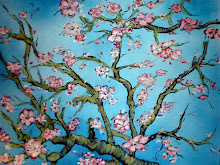Andrew Matlack and Bryan Borut "When Video Game Worlds Collide"
This presentation compared video game artist, Sid Meier and Shigery Miyamoto. It was nice to see two artists both working in the same industry but with very different ideas. Sid Meier, for example, works with mostly PC games involving realistic themes and strategy while Shigery Miaymoto works with video game consoles, such as Nintendo, to create completely fictional games based around various super heros. It amazing to think about the evolution of video games. They are constantly improving and very year they become more and more complex. I thought this presentation made a really interesting comparison of the two different kinds of video games, as well as the two different artists.
Joey Gambatese and Ceire Parker "Reality, Virtuality, and Digital Synergy"
This presentation compared two artists, Rafal Lozano-Hemmor and Masaki Fujinata, both working with digital art that involves the participation of its viewers. Both of these artists are interested in art that is controlled by the public; everyone is free to manipulate these pieces, in fact, they are asked to do so. I love the idea of involving the viewers of your artwork. I think both of these artists do a wonderful job of making art for everyone and allowing their art to not just be seen but experienced. I enjoyed hearing about Masaki Fujinata's piece, Portray the Silhouette (2006), involvinng the creation of false shadows in which viewer is allowed to interact with it.
Lindsay Brown, Matt Kozdron, & Brittany Shurts "The Expression of Color"
This presentation was so interesting because it showed us the artists behind advertisements we constantly see. Peter Jaworowski, Neil Duerden, and Joe Mcnally are all artists who create commercial or documentary images through the use of photography and photoshop. It's interesting to think about how these artists come up with their ideas and how they make something as simple as Sprite seem exciting and colorful. I enjoyed seeing the different advertisements individually and then seeing them next to one another at the end. Joe McNally's images from "The Panorama of War" were my favorites. The beautiful colors and strong emotions he is able to capture with his camera is truly amazing.
Ryan Janelli and Lizz Lesso "Untitled"
This presentation compared artists, Paul Smith and Feng Mengbo, who are both working with digital media to create works for which they are the subject of. I thought Paul Smith's pieces on Masculinity were hysterical as well as really interesting. Its nice to see an artist who works with big ideas but does it in a less serious, and in some cases, comical way. Feng Mengbo also works with bigger issues, such as Communist China, in his artwork. Although he wanted to be considered a "game artist," I thought the video game shown, in which Mengbo is the character, was interesting but not quite understandable. The other video games we looked at all had a clearly defined goal and strategy, but I couldn't really grasp the purpose of the video camera in this one or what the game was really about.
Emirys Brito, Elle Rohana, Adriana Kelly "Synthesizing Nature"
I really enjoyed this presentation because it was so different from all the others. Annea Lockwood, Petri Kuljuntausta, and Hildegard Westerkamp are all artists working with natural occurring sounds, but in very different ways. I thought the most interesting was Petri Kuljuntausta and his "frozen sounds." I was really fascinated with his ideas about finding internal sounds and noticing the actual sound of a sound. At first it was a little hard for me to understand, but after listening to the recording it all made sense. I also enjoyed Annea Lockwoods sounds of nature and the environment. It's amazing to me to think about people being able to make beautiful compositions with millions of simple sounds that don't seem to go together at all. These artist added something new to the table and I thought it was really interesting to learn about as well as very nicely presented.









 Cui Xiuwen works, again, in self-portraits to describe her own battles and experiences as a woman as well as many other issues related to womanhood. She works in video and photography to describe the relationships of men and women, the struggles of a young girl growing up in Beijing, and the strong roles women sometimes assume in China’s rapidly evolving economy. With a lot of her recent work, she is attempting to expose and reveal to all what it is like to be a woman; issues of anxiety, doubt, vulnerability, and ambition.
Cui Xiuwen works, again, in self-portraits to describe her own battles and experiences as a woman as well as many other issues related to womanhood. She works in video and photography to describe the relationships of men and women, the struggles of a young girl growing up in Beijing, and the strong roles women sometimes assume in China’s rapidly evolving economy. With a lot of her recent work, she is attempting to expose and reveal to all what it is like to be a woman; issues of anxiety, doubt, vulnerability, and ambition.


